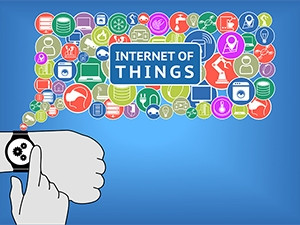
The number of Internet of things (IOT) connected devices will reach 38.5 billion in 2020, up from 13.4 billion in 2015 - a rise of over 285%.
That's according to Juniper Research's recent study - The Internet of things: Consumer, Industrial and Public Services 2015-2020 - which looks at how stakeholders can maximise the IOT opportunity.
The research firm says while IOT 'smart home'-based applications grab media headlines; it is the industrial and public services sector - such as retail, agriculture, smart buildings and smart grid applications - that will form the majority of the device base.
It points out this is mostly due to a much stronger business case for these types of applications.
While the number of connected devices already exceeds the number of humans on the planet by over two times, for most enterprises, simply connecting their systems and devices remains the first priority, says Juniper Research.
According to Steffen Sorrell, senior analyst at Juniper research: "the IOT market is still at an early stage - knowing what information to gather, and how to integrate that into back office systems remains a huge challenge".
For most businesses, the challenge right now is to adopt a connected strategy - knowing which elements of the business requires greater insight, linking that with cloud computing and big data services, says Sorrell.
"Direct challenges include system integration, concerns with device interoperability and ensuring end-to-end security."
The backbone of the IOT is essentially the analytics behind the connected devices, says Sorrell. To maximise its potential, interoperability is required so that devices can communicate, share and understand information between one another, he adds.
In the current landscape, this presents an enormous challenge; especially in the machine-to-machine sector where the market is very fragmented, says Sorrell, adding the answer is standardisation.
He points out security is another crucial challenge affecting organisations to maximise the IOT opportunity, particularly in the business-to-business sector, where trust is fundamental.
"As more and more devices come online, it becomes increasingly difficult to prevent breaches from cyber-attacks, particularly when one considers the sophistication of present-day attacks, software vulnerabilities and human error, not to mention the fact that IOT devices will be expected to be security-robust for several years."
The best approach therefore, will require detection of breaches and the ability to prevent their spread rather than simply trying to keep all attackers out, says Sorrell.
For service providers and stakeholders, maximising the IOT will require an acceptance that owning the end-to-end is not possible - collaborative, open approaches are a must, he adds.
Share